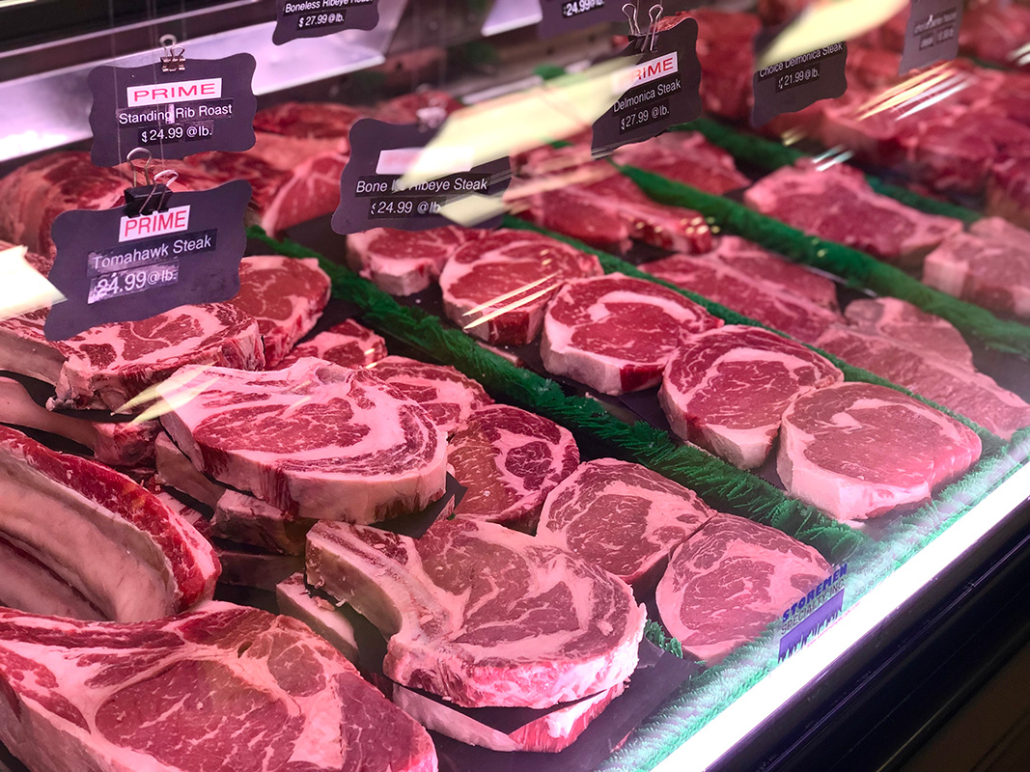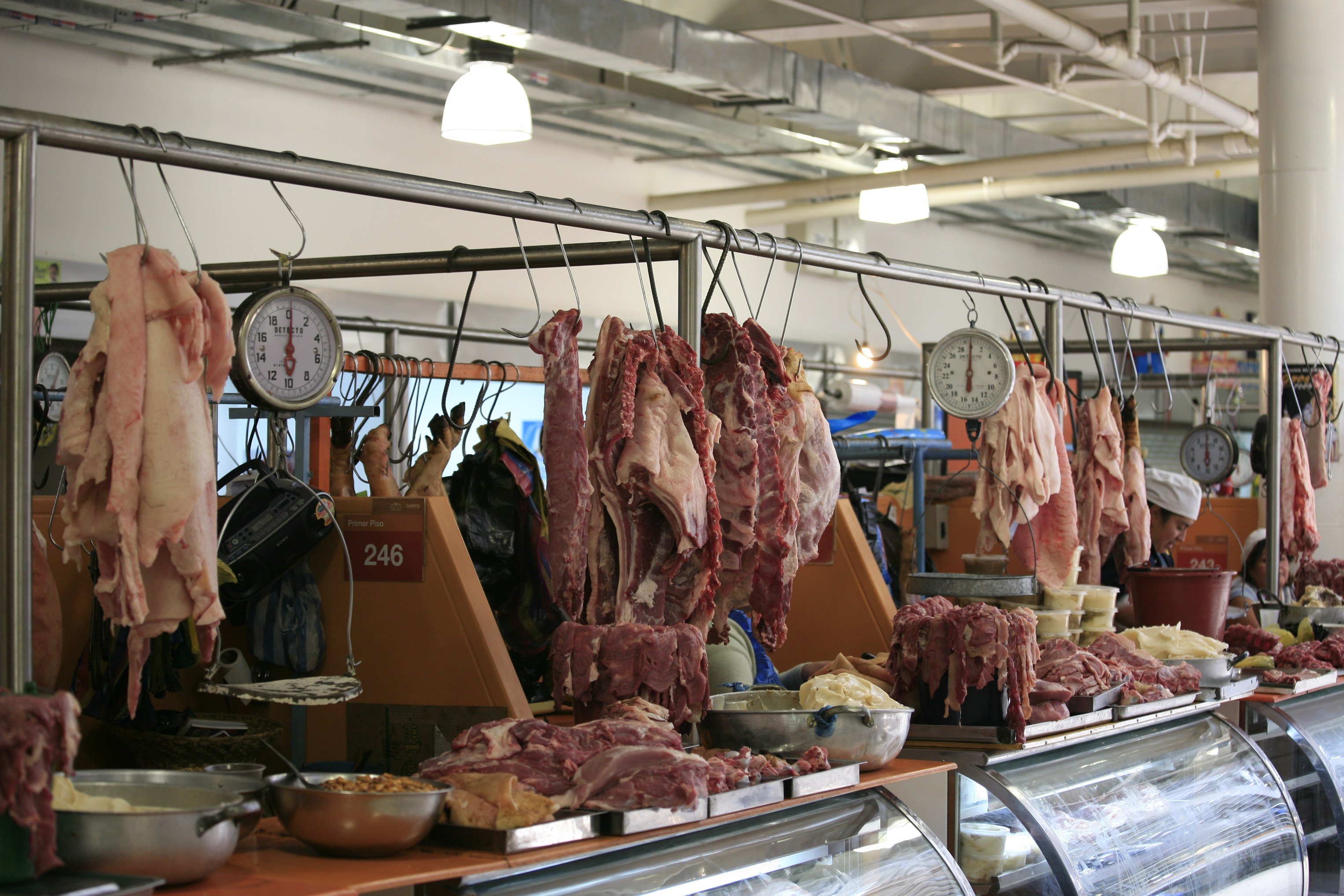Why Locals Love Bagley Farms Meat Market Edwardsville IL for Their Meat Shopping
Why Locals Love Bagley Farms Meat Market Edwardsville IL for Their Meat Shopping
Blog Article
Uncover the Art of the Butcher's Cut in a Modern Meat Market
In the ever-evolving landscape of contemporary meat markets, the butcher's cut has transcended its conventional roots, combining old-time workmanship with contemporary practices. Today's butchers are not just cpus of meat; they are experienced craftsmens who emphasize sustainability and moral sourcing. Their expertise in choose and preparing cuts customized to particular culinary demands supplies an unmatched eating experience. What really establishes the contemporary butcher apart is their ability to build a much deeper connection in between consumers and the beginnings of their meat. Exactly how do these masters balance tradition with technology, and what ramifications does this have for the future of meat consumption?
Evolution of Butchery Strategies
The evolution of butchery strategies reflects an abundant tapestry of innovation and adaptation driven by innovations in innovation, adjustments in consumer need, and a much deeper understanding of meat science. Historically, butchery was a craft gave via generations, with methods sharpened over centuries to make best use of yield and flavor. The industrial transformation ushered in mechanization, changing typical practices and allowing large handling.
The mid-20th century saw butchery techniques even more fine-tuned by clinical understandings right into muscle biology and meat aging, enhancing both tenderness and preference. Technologies like vacuum cleaner product packaging and refrigeration extended product shelf-life, enabling butchers to branch out offerings and enhance top quality control. This duration additionally noted the surge of customized equipment, such as band saws and meat slicers, which increased precision and efficiency in meat processing.

The 21st century has actually presented digital innovation into the butchery realm. Computerized systems currently assist in monitoring pet provenance and enhancing cuts to satisfy particular customer preferences. In addition, a rebirth in artisanal butchery has actually arised, blending traditional skills with modern-day expertise to deal with consumers looking for moral and sustainable meat options. This evolution emphasizes a vibrant interplay between practice and technology, conference contemporary needs while maintaining the craft's heritage.
Understanding Meat Cuts
Comprehending the details of meat cuts is important for both butchers and customers looking for quality and value. For butchers, specific cuts reflect skill and regard for the craft, ensuring minimal waste and ideal return.

Comprehending muscular tissue make-up is vital; muscle mass used extra often by the animal often tend to be tougher and are best suited for sluggish cooking approaches, while less-used muscle mass, like those found in the loin, are extra tender and suitable for cooking or roasting. Experience with these distinctions equips consumers to make enlightened choices, boosting their culinary ventures.
Selecting Top Quality Meat
Choosing the ideal meat entails more than just choosing an aesthetically appealing piece from the screen. The art of picking top quality meat requires a discerning eye and understanding of details attributes that represent quality and quality.
Second of all, take into consideration the marbling, which refers to the white flecks of fat within the muscle mass. Appropriate marbling is a vital indication of inflammation and taste, as it melts during cooking, improving the meat's juiciness. Keep in mind, greater marbling usually associates with premium quality cuts, such as USDA Prime.
Texture is another crucial element; meat must feel solid to the touch, not slimy or excessively soft. Furthermore, bear in mind the fragrance. Fresh meat ought to have a clean, neutral smell, without any sour or off-putting odors.
Pairing Cuts With Food Preparation Approaches

On the other hand, harder cuts like brisket and chuck roast are abundant in collagen, which breaks down into gelatin when cooked gradually. These cuts are ideal wikipedia reference for braising or visit the site slow roasting, enabling the meat to soften with time and develop deep, complex flavors. Cuts such as short ribs and pork shoulder get on well with slow-cooking techniques, where prolonged cooking times change their durable textures into delicious meals.
Lamb shanks and oxtail, which call for prolonged cooking to tenderize, are perfect candidates for stewing or slow simmering. These methods coax out rich, hearty tastes while keeping dampness. By recognizing the one-of-a-kind characteristics of each cut, cooks and home chefs alike can boost their cooking developments, making sure each meal is both satisfying and memorable.
The Butcher's Function Today
Navigating the advancing landscape of the contemporary meat market, the butcher's role today expands beyond mere prep work of cuts. Contemporary butchers are culinary craftsmens, educators, and supporters for sustainable techniques. They connect the gap in between the farm and the best site fork by making certain ethical sourcing, recognizing animal husbandry, and focusing on transparency in the supply chain. This change reflects the expanding consumer need for quality over amount, where provenance and pet welfare are paramount.
In enhancement to crafting precise cuts, butchers currently involve directly with consumers, providing cooking suggestions and tailoring choices to match individual demands and choices. Their experience in meat aging, marbling, and flavor accounts encourages consumers to make educated choices, boosting their culinary experiences. This individualized solution exhibits the butcher's advancing duty as a relied on advisor in the kitchen.
Additionally, butchers are crucial in minimizing waste, using entire pets to develop varied products such as sausages and stocks. This extensive technique not just values the pet but also aligns with contemporary sustainability goals. This way, the modern-day butcher embodies both tradition and development, adapting to an ever-changing market while protecting the creativity and stability of their craft.
Final Thought
Proficiency in comprehending diverse meat cuts and quality indications equips butchers to offer informed referrals, lining up specific cuts with optimum food preparation methods. By recognizing historical practices while welcoming contemporary needs, the butcher's function remains essential in today's advanced meat market.
Report this page